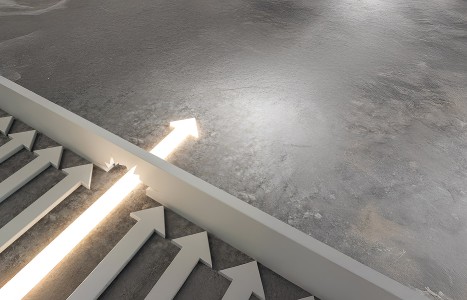You became a chiropractor to serve people, not an insurance company. You deserve to run a business that aligns with your values, supports your family and lights you up. Cash-based care isn’t just a pricing model – it’s a philosophy rooted in freedom, trust and respect for your patients and for yourself. Here's why - and how - to do it.
Soft Tissue, Fascia and the Adjustment
Since I have started writing this column, many of you have written to me. There is a theme that runs through some of the letters: Most of the doctors who are interested in low-force adjusting seem to also have an interest in soft tissue work. I love and appreciate soft tissue work myself. I started as a massage therapist before I became a chiropractor. But there is a derailment somewhere. It seems that many of the doctors who specialize in soft tissue see adjusting as secondary. Perhaps they were turned off by poorly done high-velocity adjusting, or have some other reasons of their own. I think we have an artificial division in our profession between those who focus on the spine and adjusting, and those who focus on soft tissue. Perhaps we can all learn to be more global.
The Importance of the Fascial Connections
Yes, muscles move bones, but that's not the whole story. After 21 years of practice, I've come to appreciate the interrelationships of the various structures of the body. I've seen the upper trapezeus let go after I release upper cervical joints. I've seen rigid necks with muscular and joint restrictions completely soften when I correct key cranial structures. It's all interwoven. I keep coming back to the connections, which leads me to the fascia. The fascia is the lining of the joints, the visceral, the cranium, and the bones. It's the unifying tissue. It appears to be the tissue that holds the memory of trauma and maintains the postural patterns. The fascia is continuous throughout the body, providing the connections that allow distant structures to affect each other.
"The body hugs the lesion" is an often-quoted statement from Jean Pierre Barral, founder of visceral manipulation. This means that the body bends or twists to attempt to create more space around some primary lesion. We can release these tensions by finding the primary fascial restrictions and releasing them. Remember, fascia can be released through myofascial work; through adjusting; through work with the dura and cranium; and through releasing the visceral fascia.
I could go on and on with theory, but let's talk about a couple of common muscle patterns and how they relate to other structures.
The Psoas, the Thoracolumbar Junction, and the Kidneys
The psoas is a common muscular problem. According to many authorities, including Janda and Liebenson, it tends to get too short and affects the ability of the abdominals to function. But what cause the psoas to shorten? When the psoas is shortened, you'll usually find a thoracolumbar restriction, usually on the right side, where T12 (or some vertebrae in that region) resists left sidebending, left rotation, and extension. Think of this as the T-L junction stuck flexed, with the psoas accommodating this structural pattern. You must correct this subluxation to allow the psoas to maintain the new length you have given it through soft tissue work and home exercise. Don't forget the quadratus lumborum, which attaches from the pelvis to the T-L junction.
Another key pattern involves the kidney fascia. The kidneys are solid organs, much appreciated by our colleagues in Chinese medicine/acupuncture. In the visceral manipulation view, the kidney "rides the rail of the psoas," doesn't have a strong attachment system, and often drops inferior. When the kidney fascia has a significant restriction, it not only affects the overall energy of the person, but creates psoas tightness.
Does this mean I no longer work on the psoas or no longer teach my patients to stretch their psoas? No, it means that I see these things in context. I recognize that rehabilitation is essential, both to engage the patient in their own healing, and to reestablish normal motion patterns. But rehabilitation works much better if I have corrected underlying fascial restrictions first, including key joints and visceral fascia.
Tennis Elbow, the Anterior Cervical Syndrome, and the Thoracic Outlet
Tennis elbow is an obvious muscle and extremity problem, right? No, not really. In most difficult or chronic tennis elbow cases, there is a double crush, and a problem with the thoracic outlet. The chronic tennis elbow (or extensor tendonitis or carpal tunnel) will almost always be accompanied by an anterior lower cervical subluxation. How can we find these. Palpate from in front, gently, in the lower cervical spine just anterior to the SCM, attempting to bring the sensitive transverse processes backward. Another useful indicator here is the muscle strength of the triceps (for C6-7), and/or the finger extensors or finger abductors (for C7-T1). These muscles, when weak, are excellent indicators of lower cervical impingement. Test via standard muscle testing. You may need to have the patient bend the head forward and rotate toward the involved side to elicit a more subtle weakness. I've written at length on the anterior cervical syndrome, including specifics of low force correction, you can find it at www.chiroweb.com/archives/17/10/09.html. The key correction for the tennis elbow may be releasing the lower cervical vertebrae that are stuck forward. The lower cervical subluxation is affecting nerve root function.
In turn, the lower cervical spine is usually being pulled upon by some restriction in the chest or upper abdomen. This is the essence of our view of the thoracic outlet syndrome. Thoracic outlet is rarely a anatomical problem, such as a cervical rib. Its usually a problem related to function, specifically related to shortened fascia and fixated joints. Common problems here can include restriction in the middle cervical fascia (which lines the hyoid region). Joint restrictions include those within the sternum, or sternochondral, or sternoclavicular restrictions. Many other visceral structures here can affect this pattern. Tightness in the structures of the chest will pull on the neck, reinforcing the cervical subluxation, and thus affecting nerve supply to the arm. Yes, to solve a difficult tennis elbow, you need to know how to correct the anterior lower cervical and the chest. You also need a search pattern that allows you to quickly evaluate all of these associated areas. My goal here is not to overwhelm you, but to open your mind, encourage you to study further, and learn to solve your patients' most difficult problems.
We are so fortunate to be part of an explosion of interest in hands-on care of the body. I know so much more than I did when I came out of chiropractic school. I hope that you, too, are excited and fascinated by the incredible potential for human healing when the fascial restrictions of the joints, muscles, and viscera are effectively released.
References/ Resources
- Barral JP. Visceral Manipulation. Eastland Press, 1988.
- Bookhout M. Evaluation and treatment of the thoracic spine and rib cage, 1999 seminar, Medford, Oregon.
- Bookhout M. Exercise as an adjunct to manual medicine, 1998 seminar, San Mateo, California.
- Bandy J.Advanced AK seminars, 1987, Austin, Texas.
- Tensegrity (matrix repatterning) seminars with George Roth,DC, 1999, 2000, 2001.
- Visceral manipulation courses, Upledger Institute, 1996-2001.
- Schafer RC, Faye LJ. Motion Palpation and Chiropractic Technic - Principles of Dynamic Chiropractic. Motion Palpation Institute, 1989.
- Liebenson C (ed). Rehabilitation of the Spine: A Practitioners Manual. Williams and Wilkens, 1996.
- Jull G, Janda V: Muscles and motor control in low back pain. In Towmey LT, Taylor JR (eds): Physical Therapy for the Low Back, Clinics in Physical Therapy, Churchill Livingstone, 1987.


